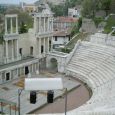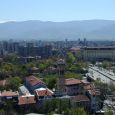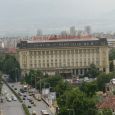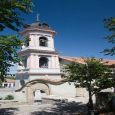Plovdiv
Advertisement
By Air
Plovdiv International Airport is located near the village of Krumovo, 5 km (3 mi) southeast of the city. It takes charter flights from Europe and has scheduled services with Ryanair to London and S7 to Moscow. Many small airports are located in the surroundings of the city including the important military airbase in Graf Ignatievo to the north of Plovdiv.
By Train
Plovdiv is a major road and railway hub in southern Bulgaria the Trakiya motorway (A1) is only at 5 km (3 mi) to the north. It lies on the important national route from Sofia to Burgas via Stara Zagora. First-class roads lead to Sofia to the west, Karlovo to the north, Asenovgrad and Kardzhali to the south, Stara Zagora and Haskovo to the east.Railway transportation in the city dates back to 1872 when it became a station on the Lyubimets-Belovo railway line. There are railways to Sofia, Panagyurishte, Karlovo, Peshtera, Stara Zagora, Dimitrovgrad and Asenovgrad. There are three train stations - Central Railway Station, Trakiya and Filipovo as well as a Freight Station.
By Bus
Plovdiv has an extensive public transport system,including around 40 bus and trolleybus lines.Six bridges span over the Maritsa river including a railroad bridge and a covered bridge. There are important road junctions to the south, south-west and north.
Plovdiv Roman theatre
Is a historical building in the city center of Plovdiv, Bulgaria. Although this structure is commonly referred to as an amphitheatre, it is actually a traditional Roman theatre. It stands between the south-western slope of the Dzhambaz Tepe and the Taxim tepe hill within the old town, and is a major tourist attraction for travelers coming to the area.The theatre was built in the 2nd century AD under the orders of emperor Trajan, and is one of the numerous surviving Roman constructions in Bulgaria today. There are several steles and wall inscriptions in Greek language in the amphitheater.Built with around 7,000 seats, each section of seating had the names of the city quarters engraved on the benches so the citizens at the time knew where they were to sit.The theater was damaged in the 5th century AD by Attila the Hun.The theater was only found in the early 1970s due to a landslide, this caused a major archeological excavation, including the removal of some 4.5 m of earth covering what was left hidden by the landslide.
Plovdiv Regional Historical Museum
Is a historical museum in the city of Plovdiv, Bulgaria. Established in 1951, it covers the history of Plovdiv from the 15th century until today (the older history is presented in the Plovdiv Archaeological Museum). It has three departments, each occupying a separate historic building.The Bulgarian National Revival department, situated in the large house of the Greek merchant from Thessaloniki Dimitris Georgiadi built 1846, takes up 825 m2 and traces the history of Plovdiv from the 15th to the 19th century.The book-publishing department follows the stages of development of the publishing during the Bulgarian National Revival and Plovdiv's role as its centre. The department takes up six halls in the house of the noted publisher and enlightener Hristo G. Danov from the early 19th century.
Bachkovo Monastery
Archaically the Petritsoni Monastery or Monastery of the Mother of God Petritzonitissa in Bulgaria is an important monument of Christian architecture and one of the largest and oldest Eastern Orthodox monasteries in Europe. It is located on the right bank of the Chepelare River, 189 km from Sofia and 10 km south of Asenovgrad, and is directly subordinate to the Holy Synod of the Bulgarian Orthodox Church. The monastery is known and appreciated for the unique combination of Byzantine, Georgian and Bulgarian culture, united by the common faith.Although the monastery survived the first waves of Turkish invasion in Bulgarian lands, it was later looted and destroyed, but restored near the end of the 15th century. The refectory, whose mural paintings by an anonymous painter bear a significant artistic value, was reconstructed in 1601 and the Church of Virgin Mary, still preserved today, was finished in 1604.
Information not available






